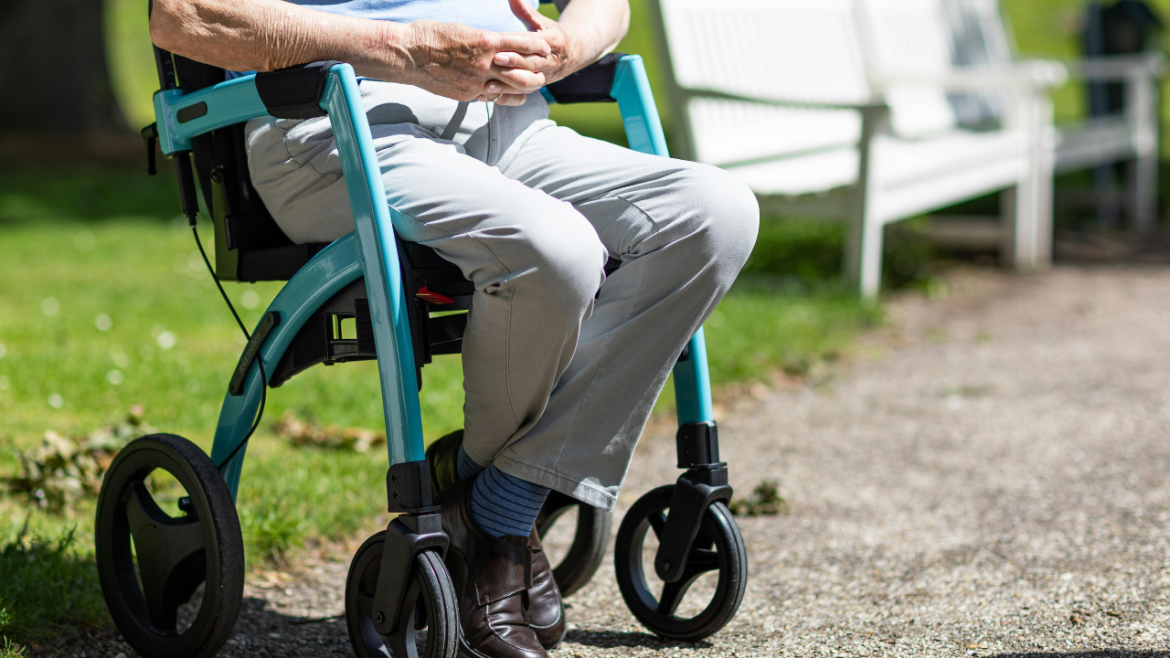Did you know that Leading Edge Senior Care has a Dementia Support Group? We meet monthly in Mesa. For more details <click here>
When Is It Time For A Senior To Use A Walker?
Aging brings many changes, some subtle and others more noticeable. For many seniors, mobility becomes a challenge over time, making it harder to move around safely. One of the most difficult decisions for seniors and their families is determining when it’s time to use a walker. Accepting this transition can be emotional, but prioritizing safety and independence is essential.
Falls are among the leading causes of injury for older adults, and mobility aids like walkers provide stability and support. Recognizing the right time to introduce a walker can help prevent accidents, ensuring a senior continues to move confidently and without fear.
Signs That a Senior Needs a Walker
Every senior experiences aging differently, but there are clear signs that may indicate the need for additional support. Balance issues, frequent falls, and difficulty standing for long periods are major red flags. If a senior often reaches for furniture or walls for stability, their body is signaling a need for assistance.
Another key indicator is a noticeable change in walking patterns. If a senior begins to shuffle their feet, take smaller steps, or appear unsteady, a walker can help restore their confidence. Pain in the hips, knees, or lower back may also make walking difficult, increasing the risk of falling.
Family members may notice that their loved one is withdrawing from social activities due to fear of falling. Seniors who once enjoyed walking outdoors or shopping may begin to avoid these activities altogether. This isolation can lead to a decline in physical and mental well-being, making mobility support even more critical.
How Walkers Improve Stability and Confidence
Many seniors resist the idea of using a walker, fearing it will make them look frail or dependent. However, walkers are designed to enhance independence, not take it away. They allow seniors to move freely without the constant worry of falling or losing their balance.
Walkers provide a sturdy frame for support, distributing weight evenly and reducing strain on joints. For seniors with arthritis, osteoporosis, or recovering from surgery, a walker can alleviate pressure, making movement less painful.
Another important benefit is improved endurance. Without a walker, a senior may feel exhausted after a short walk, but with proper support, they can move further with ease. This helps maintain an active lifestyle, which is essential for overall health and quality of life.
Types of Walkers and Choosing the Right One
Not all walkers are the same, and choosing the right one depends on individual needs. A standard walker, with four legs and no wheels, provides maximum stability but requires lifting with each step. This type is best for seniors who need full support while walking.
For those who need balance assistance but still have some mobility, a two-wheel walker can be a great option. It allows smoother movement while providing the necessary support. Rollator walkers, which have four wheels, a seat, and hand brakes, are perfect for seniors who need a rest between walks.
Consulting a physical therapist or doctor can help determine which walker suits a senior’s needs. Proper height adjustment and grip comfort are crucial to prevent strain and ensure ease of use.
Overcoming Resistance to Using a Walker
It’s common for seniors to resist using a walker. They may feel embarrassed, view it as a loss of independence, or fear what others will think. Approaching the conversation with sensitivity is important.
Rather than insisting, family members should highlight the benefits. Emphasizing that a walker offers freedom, rather than limitation, can help shift their perspective. Pointing out how it allows them to continue daily activities with less pain and risk of falling can also be persuasive.
Trying out different walkers in a comfortable setting can ease fears. Encouraging a senior to practice using a walker at home before taking it outside can build confidence. Support and reassurance go a long way in making this transition smoother.
Creating a Safe Walking Environment
A walker is only effective if a senior’s environment supports safe movement. Household hazards like loose rugs, cluttered pathways, and poor lighting can still pose a risk. Ensuring clear, well-lit walking spaces can make using a walker even more beneficial.
Bathrooms should be equipped with grab bars, non-slip mats, and raised toilet seats if needed. Proper footwear is also essential—non-slip shoes provide better traction and reduce the likelihood of falls.
Encouraging a senior to use the walker consistently is also important. Some may hesitate to use it all the time, but reinforcing its value in preventing falls can increase regular use.
When to Seek Medical Advice
If a senior is experiencing frequent falls, unsteady gait, or joint pain, a medical evaluation is necessary. Doctors and physical therapists can assess balance, muscle strength, and overall mobility to recommend the best course of action. They can also provide guidance on walker selection, proper use, and exercises to strengthen mobility.
Early intervention can prevent serious injuries. Waiting until after a fall to introduce a walker increases the risk of complications, including fractures and long recovery times. Being proactive ensures safety and preserves independence.
Conclusion
Recognizing when a senior needs a walker is an important step in maintaining mobility, safety, and quality of life. Balance issues, pain, and a fear of falling should never be ignored. A walker provides the support needed to continue moving with confidence, allowing seniors to stay active and independent.
By choosing the right walker, addressing concerns with empathy, and creating a safe environment, families can help their loved ones transition smoothly. Rather than limiting freedom, a walker can open the door to a safer, more fulfilling life.

